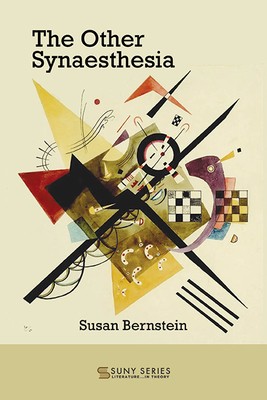
- We will send in 10–14 business days.
- Author: Susan Bernstein
- Publisher: State University of New York Press
- ISBN-10: 1438493622
- ISBN-13: 9781438493626
- Format: 15.2 x 22.9 x 1.3 cm, hardcover
- Language: English
- SAVE -10% with code: EXTRA
Reviews
Description
This book investigates synaesthesia in philosophy and literature, from Aristotle to Charles Baudelaire to Jean-Luc Nancy and beyond. Its central claim is that while synaesthesia is generally read as a figure of transcendence and unity, there is another effect of synaesthesia, one that articulates differences and displaces essence. This other synaesthesia opens up within or alongside the more familiar sense of synaesthesia as synthesis, pointing to an alternative understanding of the senses and of the arts as "interbelonging" in a kind of rhythmic relation rather than parts of a totalizing aesthetic whole. In so doing, The Other Synaesthesia contests the suggestion that neurological synaesthesia is the foundation for the aesthetics of synaesthesia. Topics include Nancy's conception of community; the correspondence between Franz Liszt and George Sand; Baudelaire's poetics; Richard Wagner's theory of the Gesamtkunstwerk, or total work of art; decadence and symbolism; and Heidegger's critique of the correspondence theory of truth.
EXTRA 10 % discount with code: EXTRA
The promotion ends in 18d.11:25:09
The discount code is valid when purchasing from 10 €. Discounts do not stack.
- Author: Susan Bernstein
- Publisher: State University of New York Press
- ISBN-10: 1438493622
- ISBN-13: 9781438493626
- Format: 15.2 x 22.9 x 1.3 cm, hardcover
- Language: English English
This book investigates synaesthesia in philosophy and literature, from Aristotle to Charles Baudelaire to Jean-Luc Nancy and beyond. Its central claim is that while synaesthesia is generally read as a figure of transcendence and unity, there is another effect of synaesthesia, one that articulates differences and displaces essence. This other synaesthesia opens up within or alongside the more familiar sense of synaesthesia as synthesis, pointing to an alternative understanding of the senses and of the arts as "interbelonging" in a kind of rhythmic relation rather than parts of a totalizing aesthetic whole. In so doing, The Other Synaesthesia contests the suggestion that neurological synaesthesia is the foundation for the aesthetics of synaesthesia. Topics include Nancy's conception of community; the correspondence between Franz Liszt and George Sand; Baudelaire's poetics; Richard Wagner's theory of the Gesamtkunstwerk, or total work of art; decadence and symbolism; and Heidegger's critique of the correspondence theory of truth.


Reviews